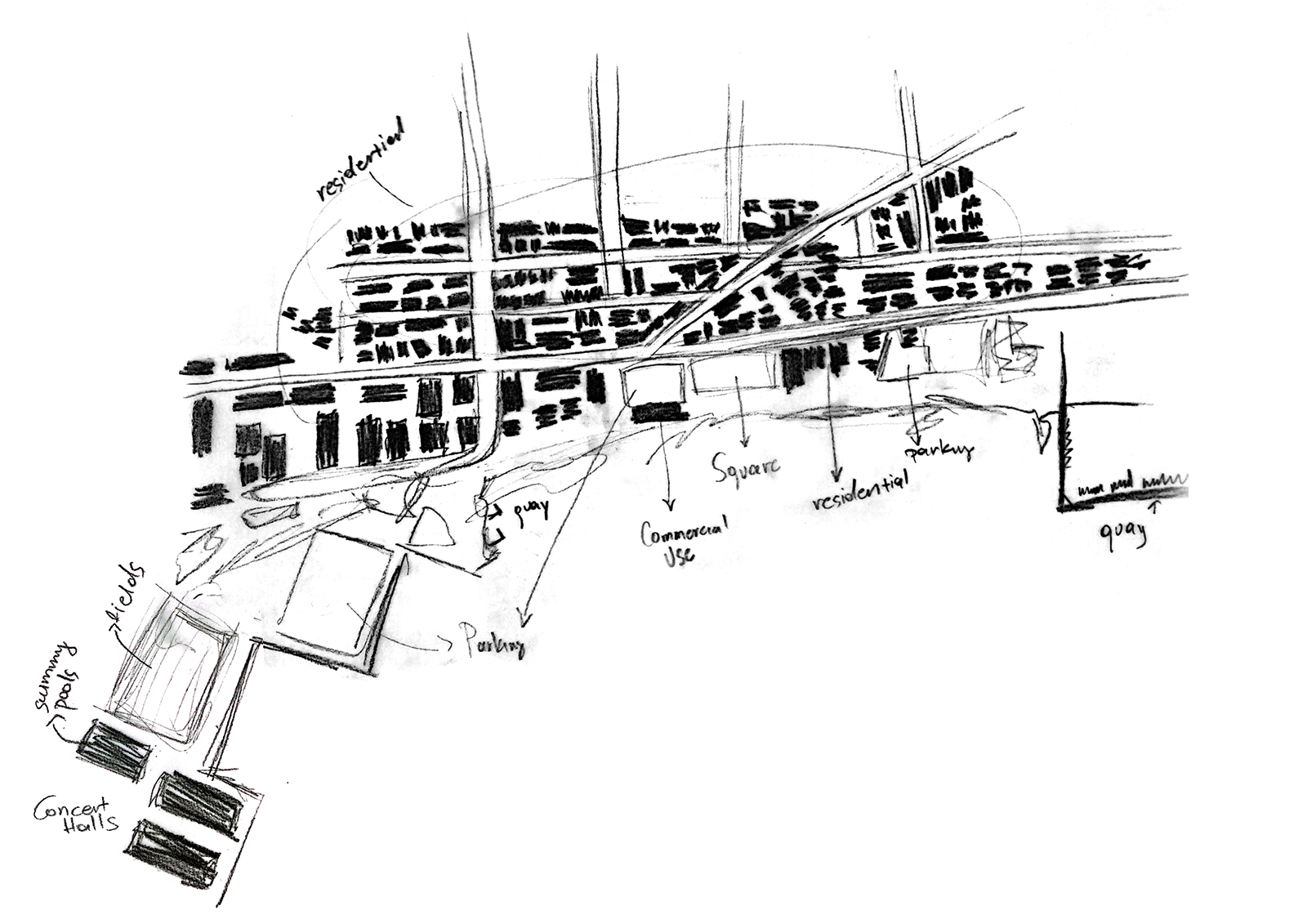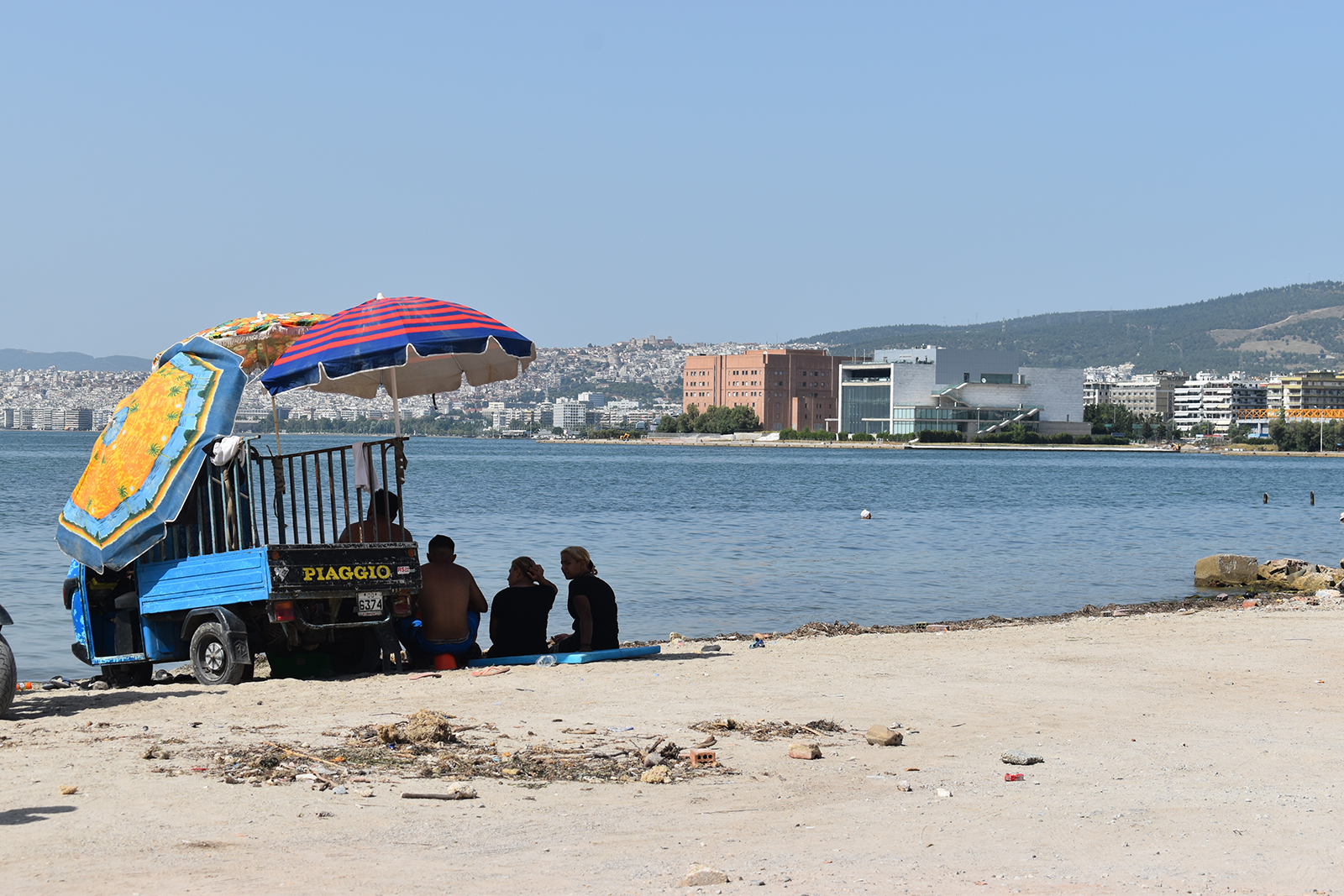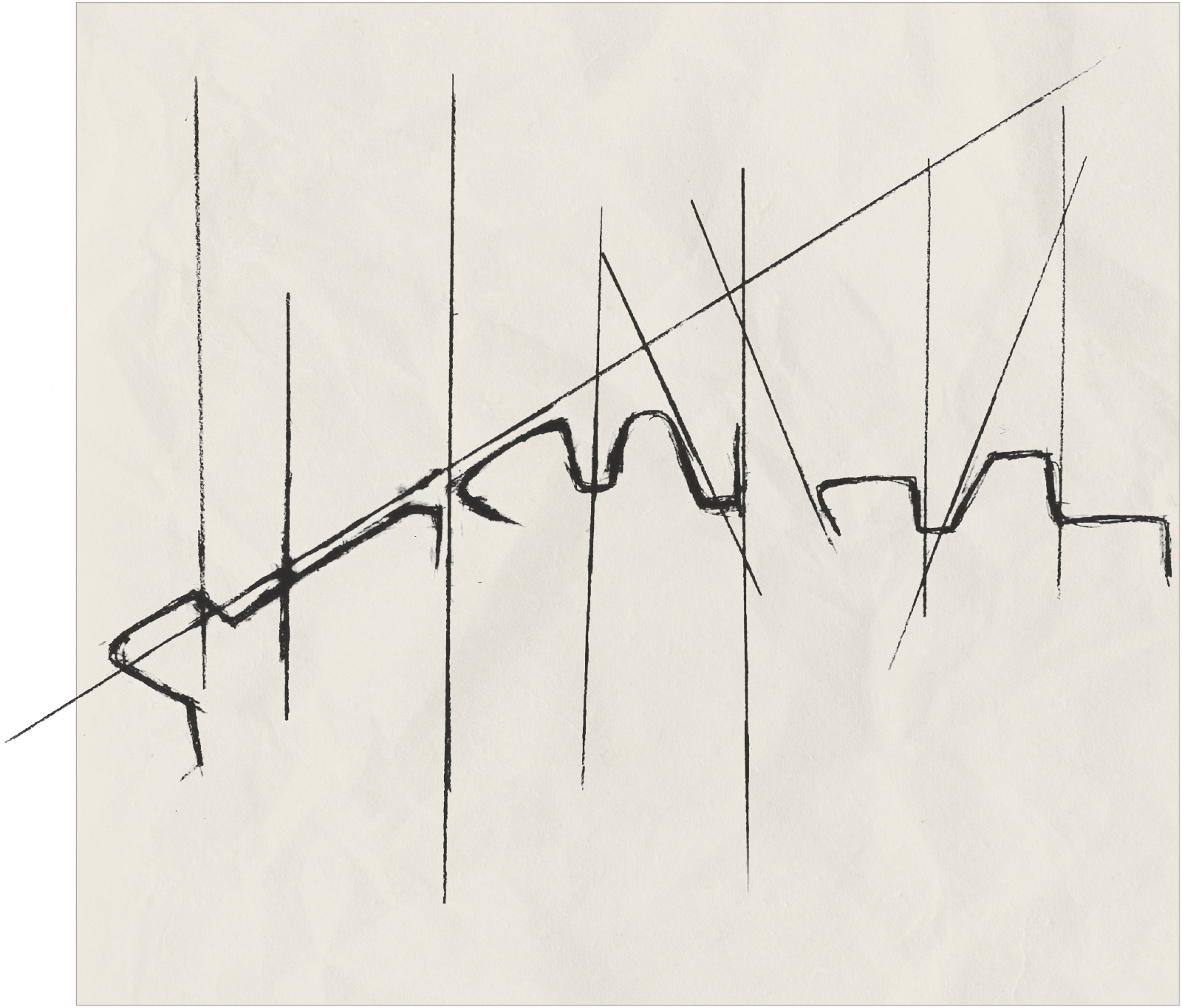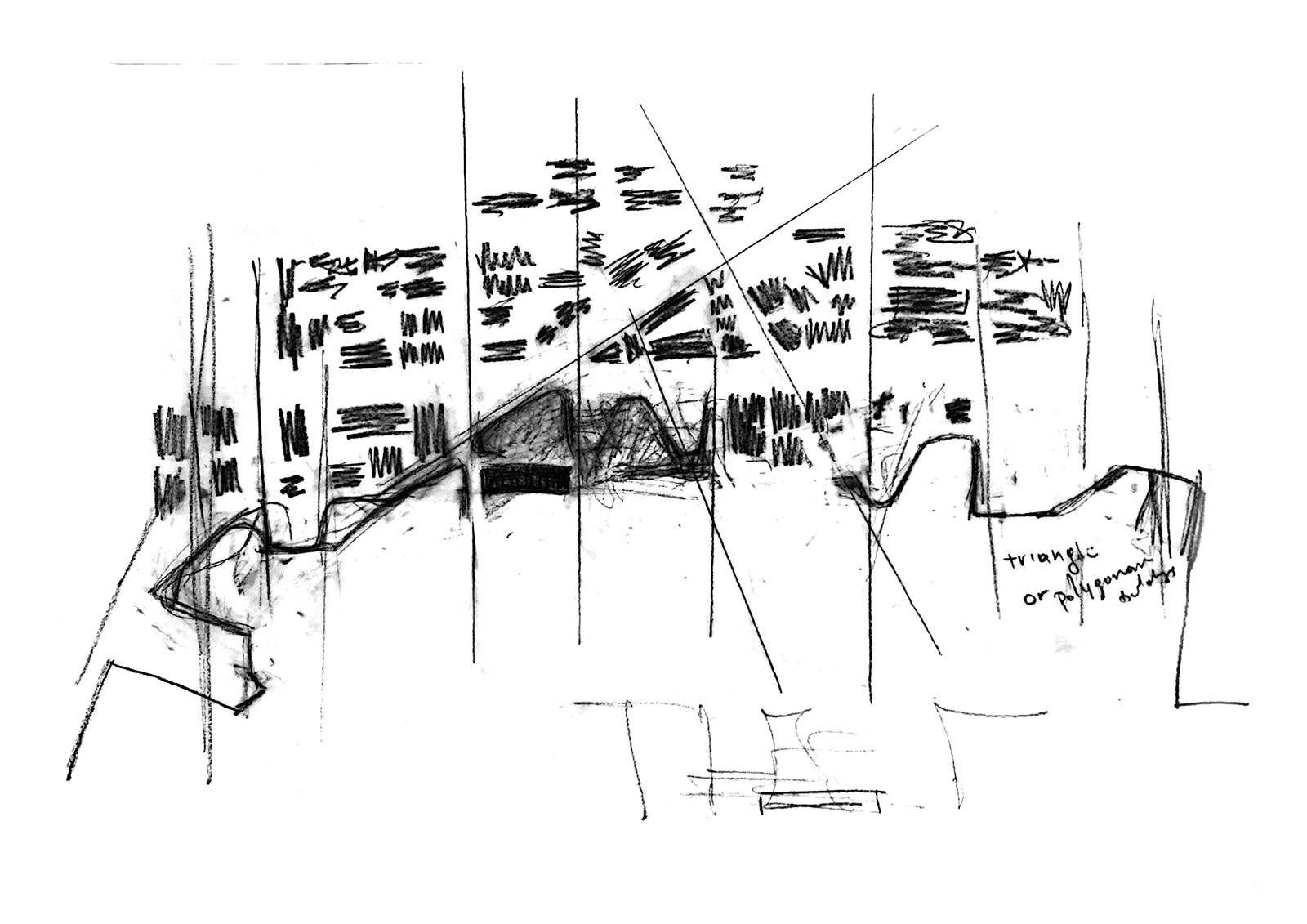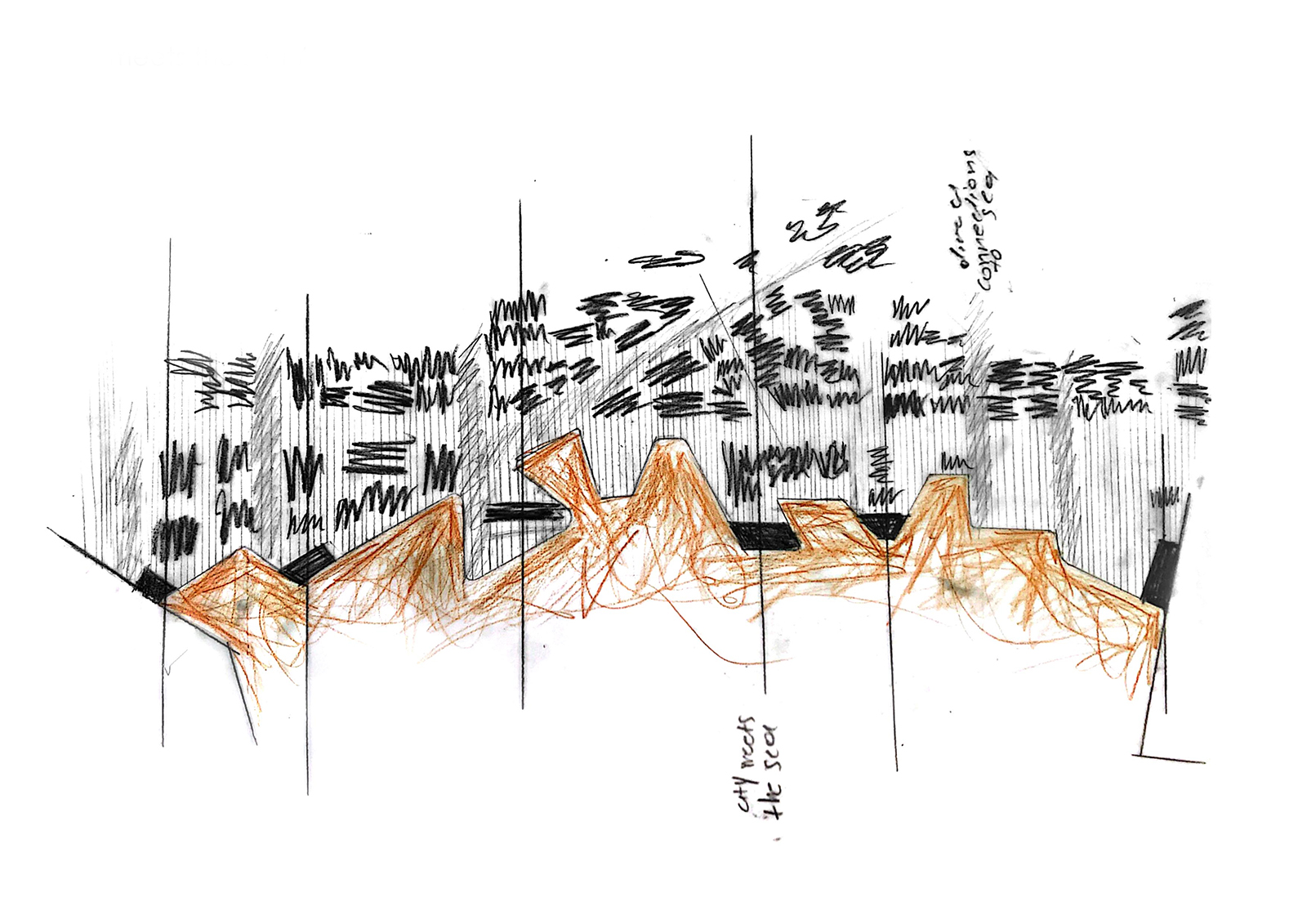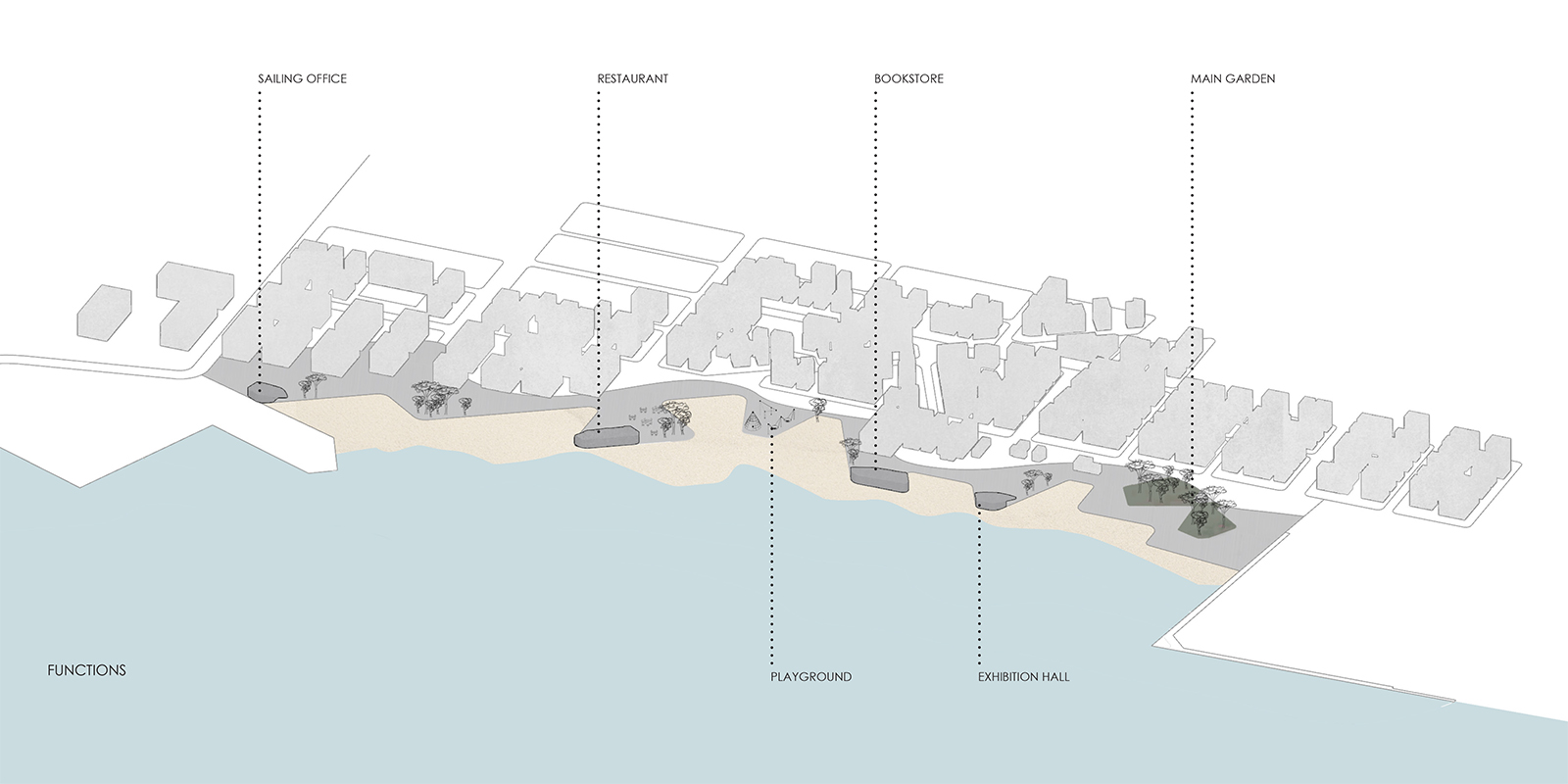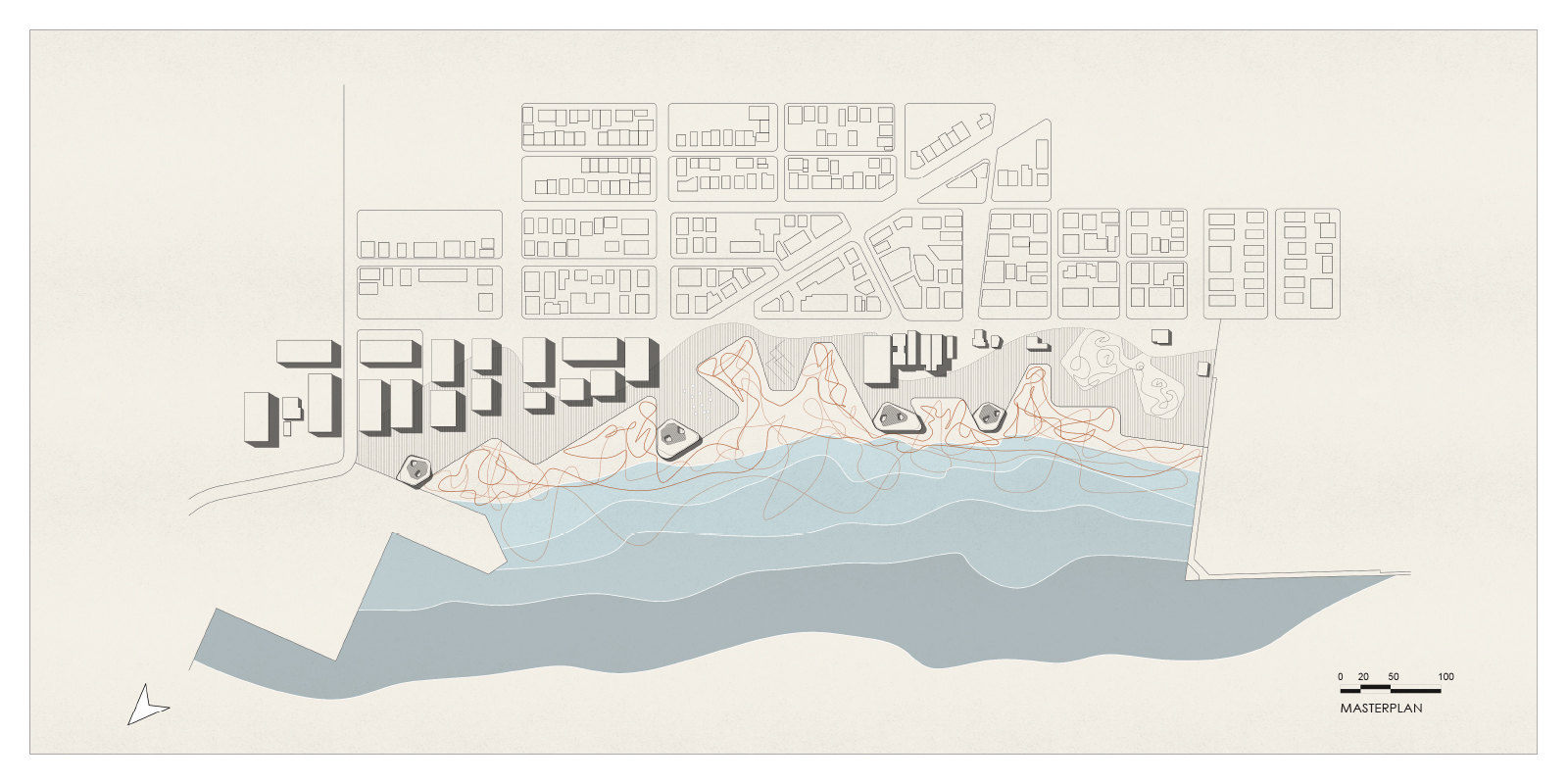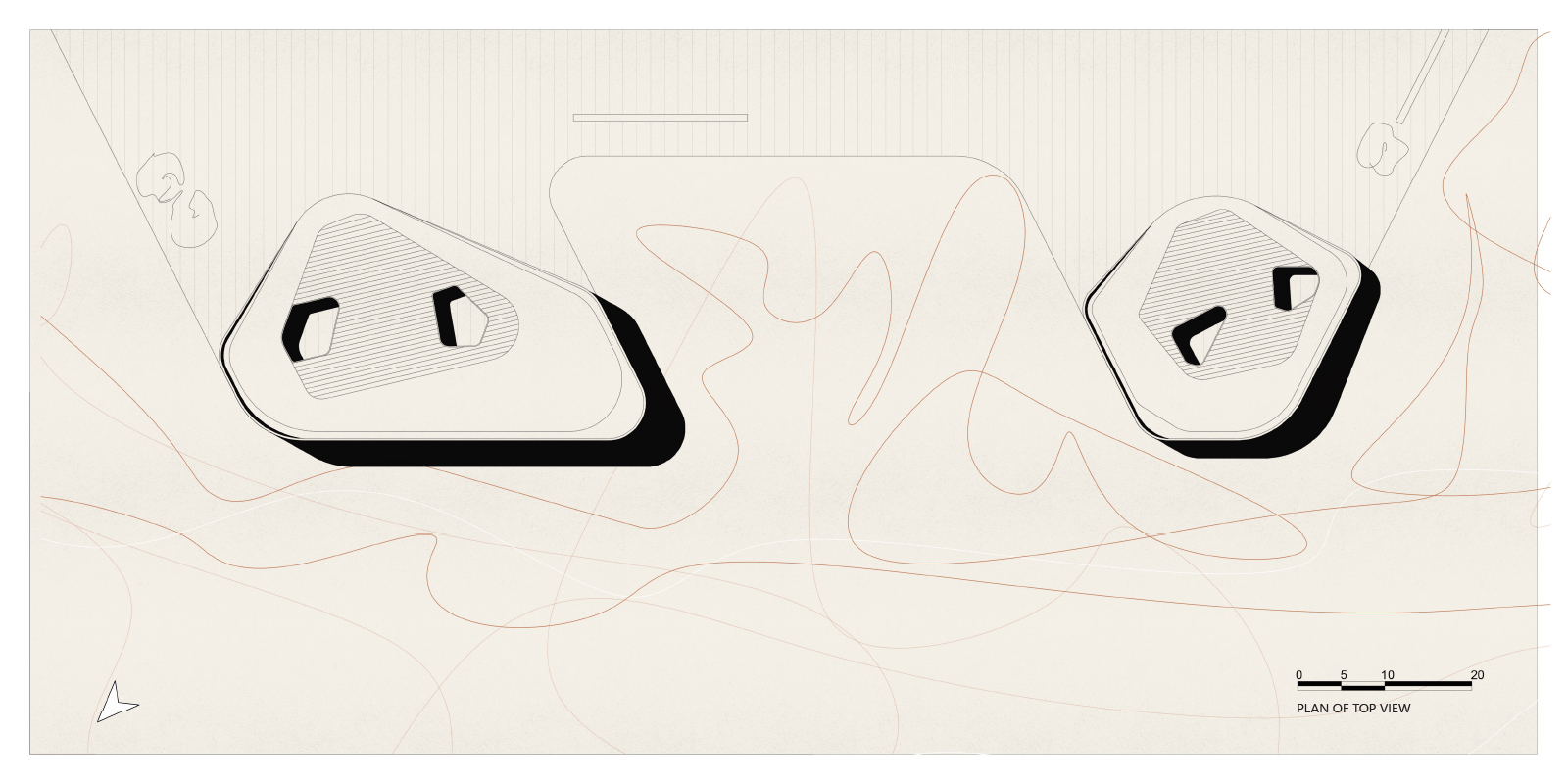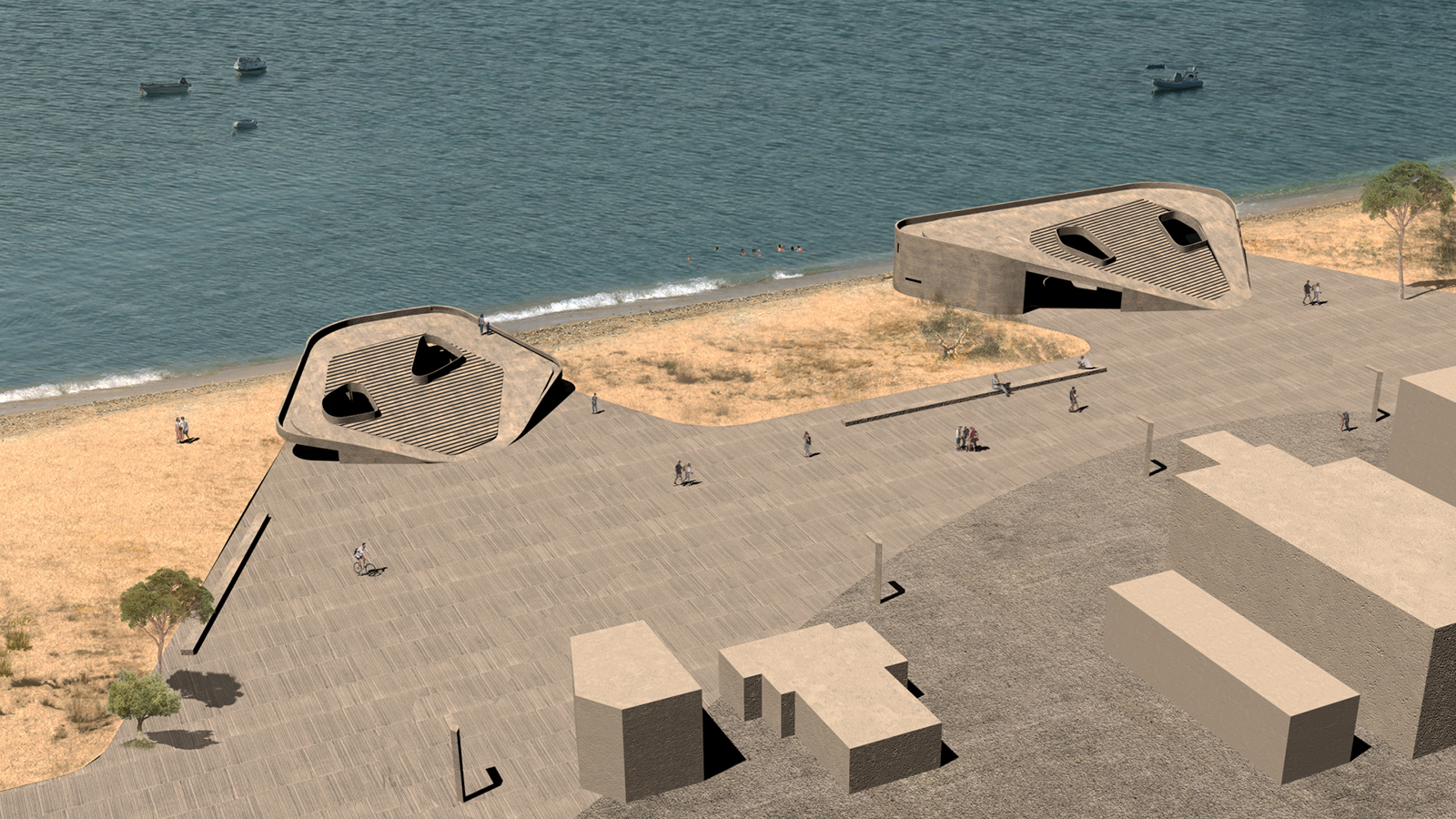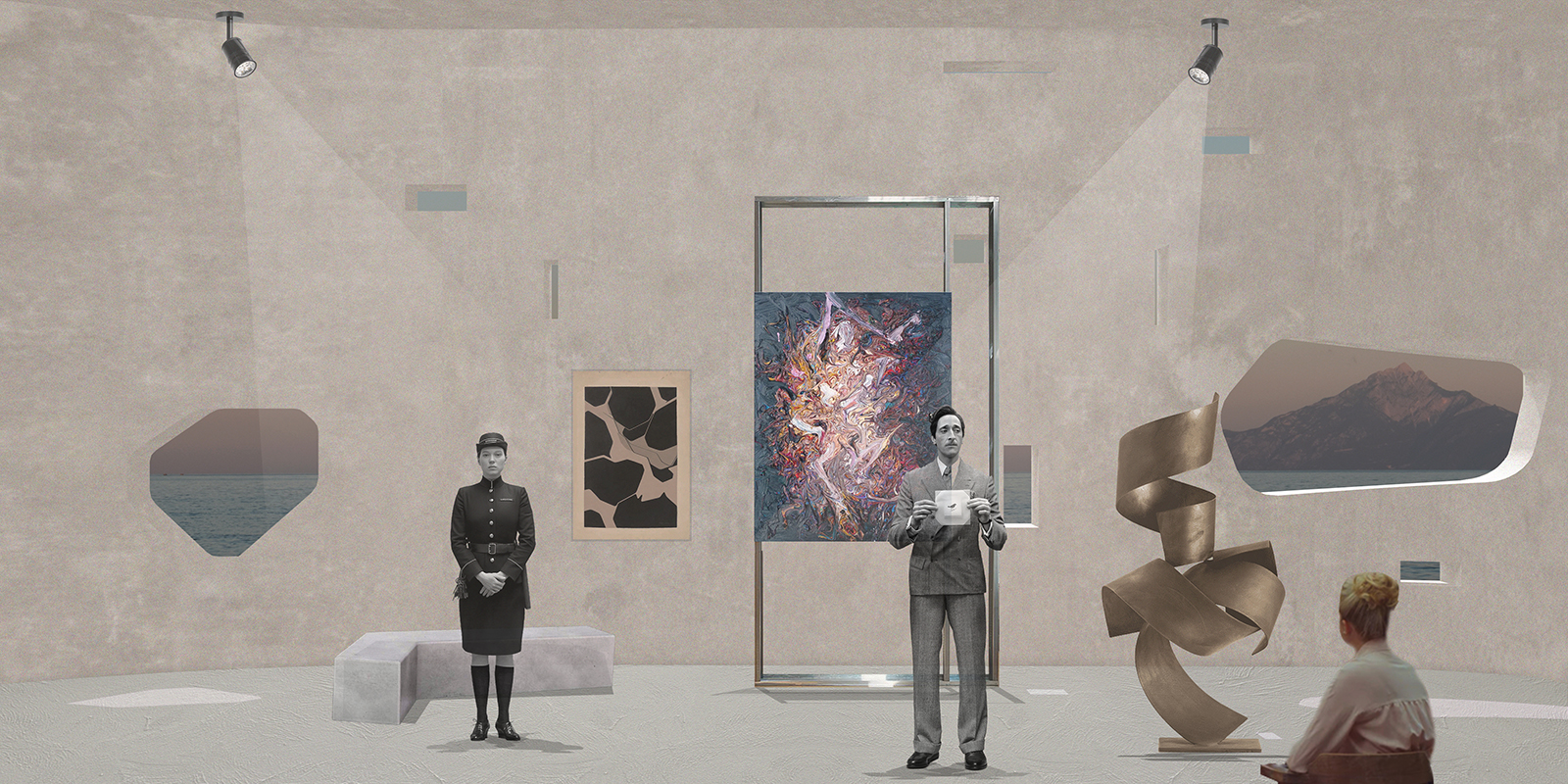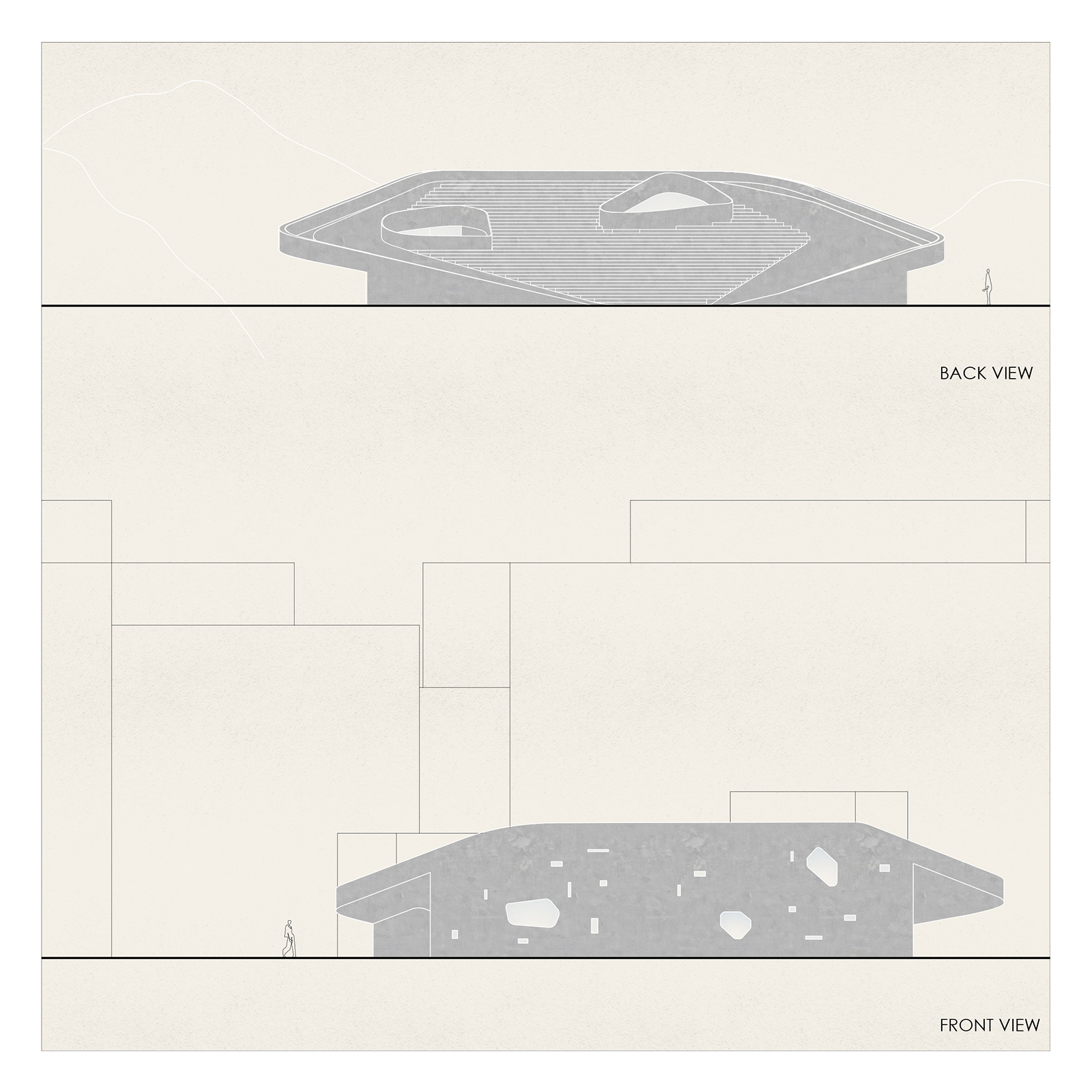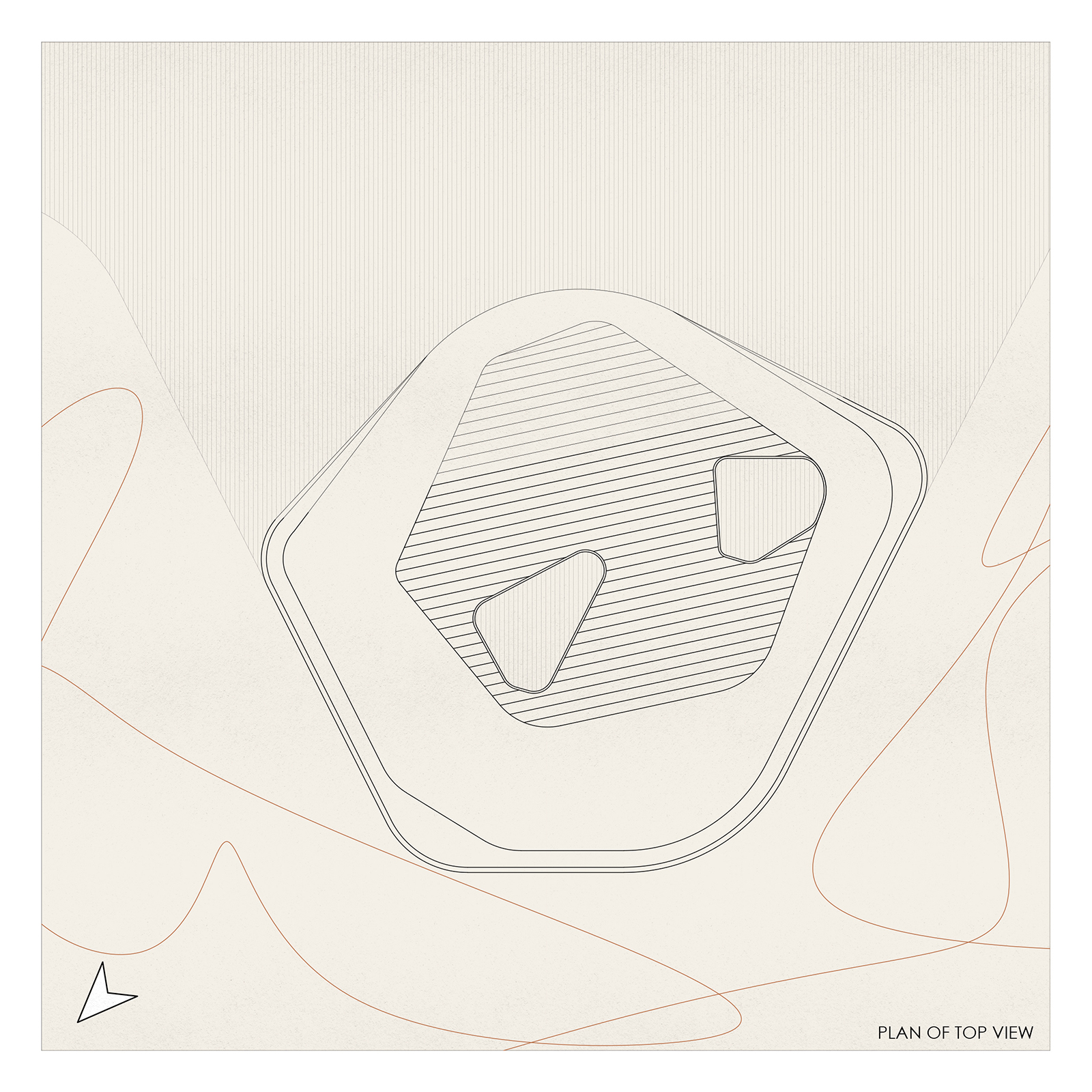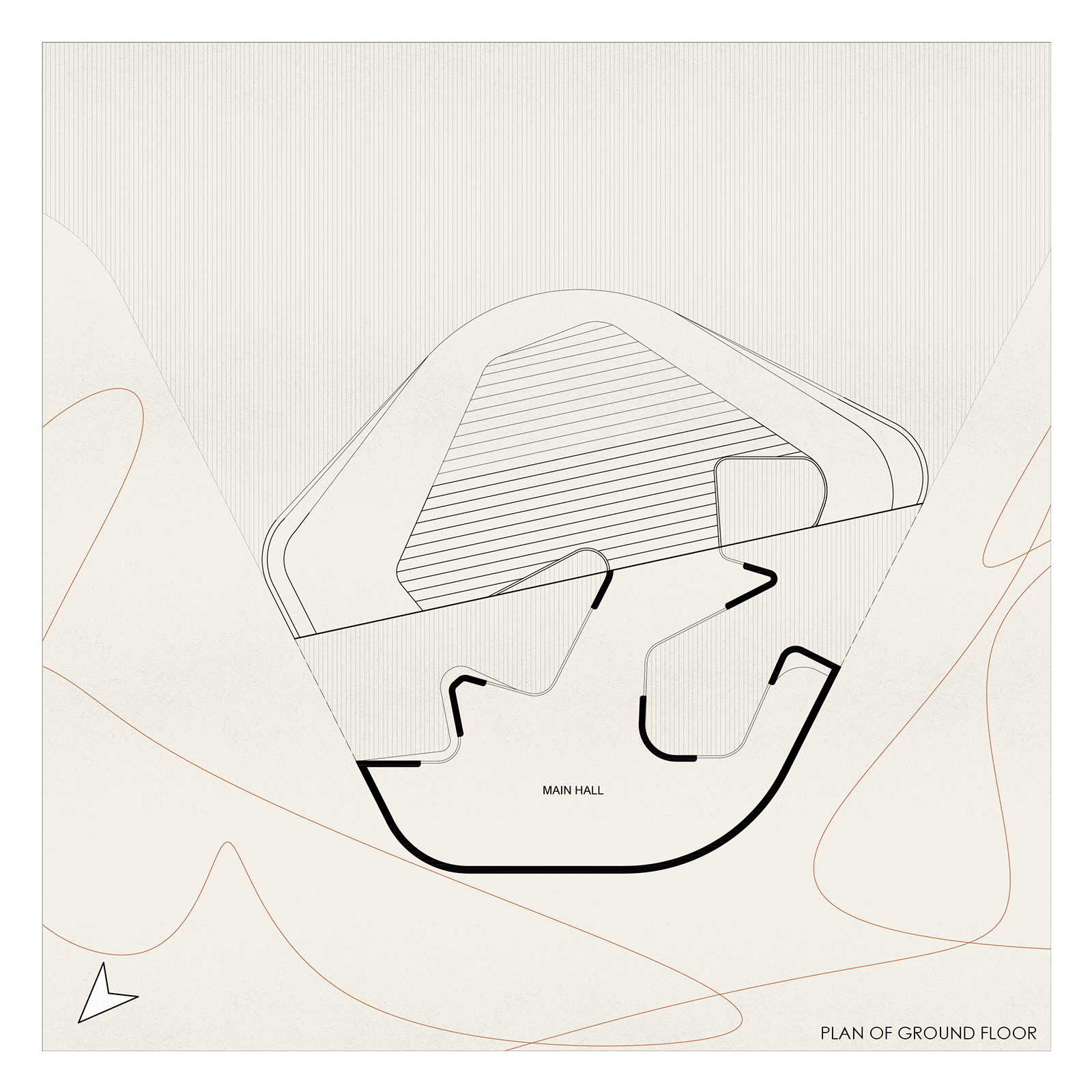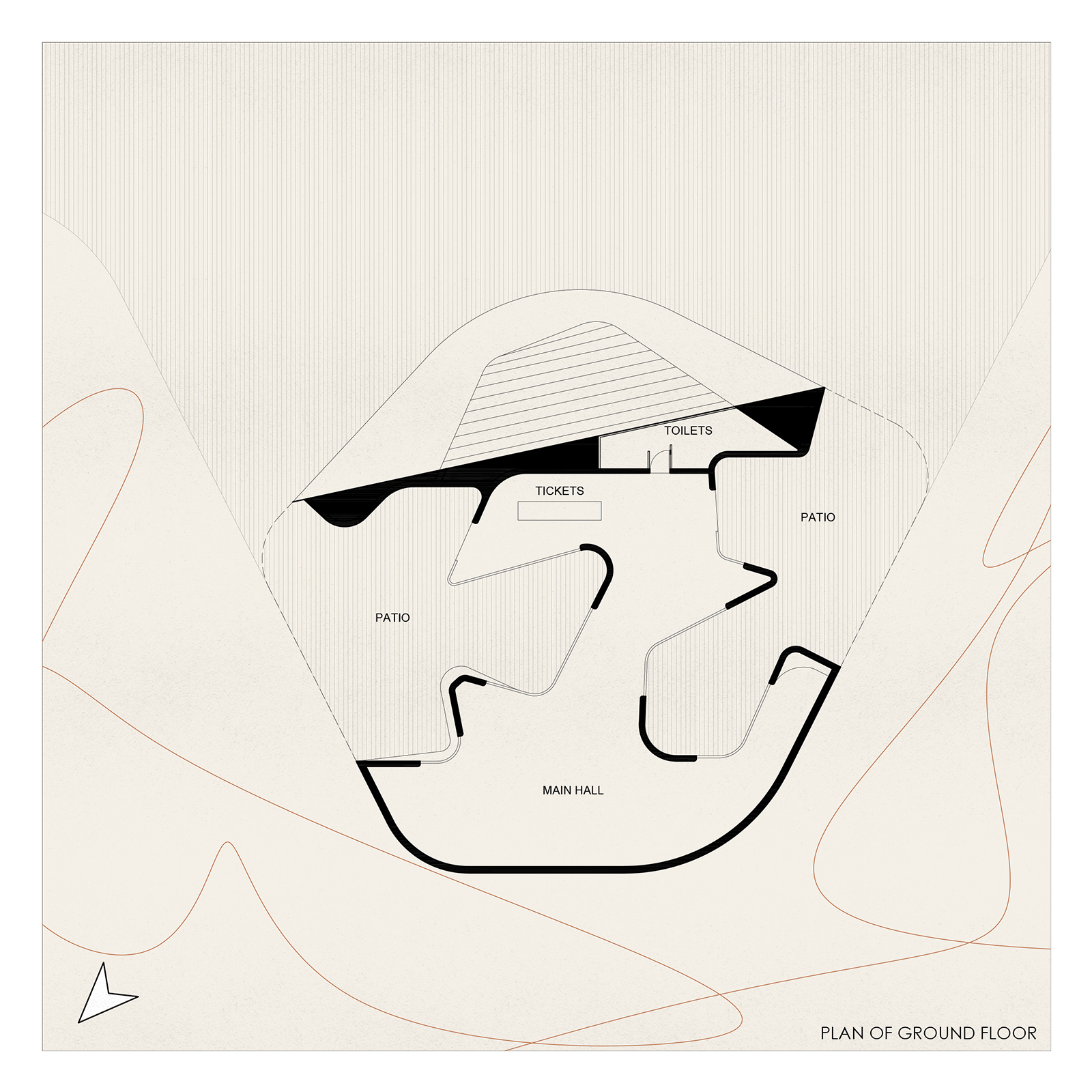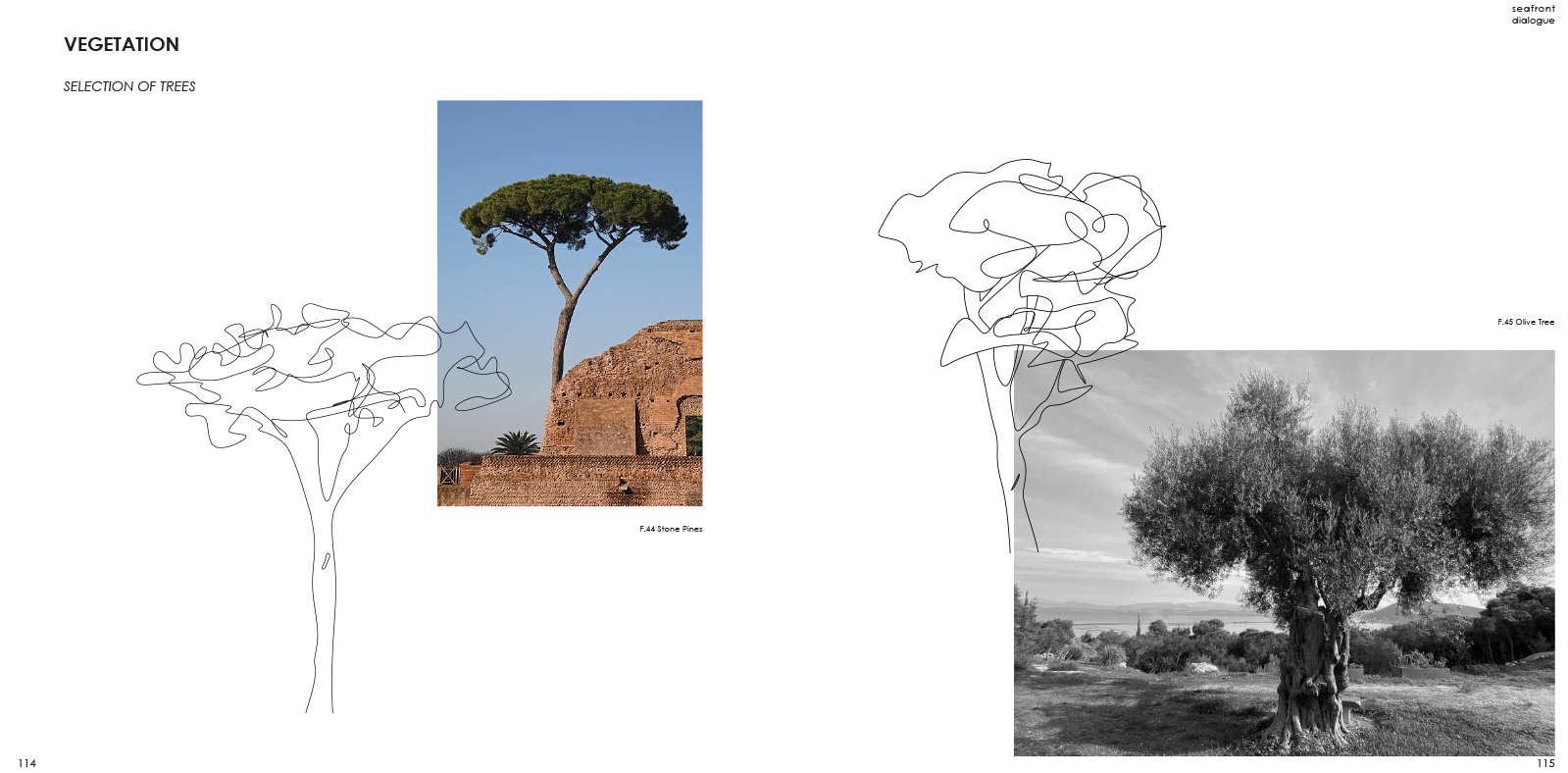Two different realities of the city of Thessaloniki, the seafront and the city, are being approached and analysed for a new architectural proposal. Magda Meimaridou in her master’s thesis project entitled ‘Seafront Dialogue: Urban Windows on the Sand of Thessaloniki’ imagines and designs a sandy area as a public space that is expanding into the densely built urban grid, creating a coexistance of cement and sand.
The research for the project begins with the study of the existing urban grid of Thessaloniki.
In order to achieve an integration between the different realities – Seafront and the City – , the urban grid extends to the waterfront.
Diagonal and vertical streets shape new geometries at the seafront. Thus, Neighborhoods of sand began to be formed through the urban plan.
Following the form of the city, the Neighborhoods of Sand unified to create the new seafront. Their unification created a dialogue, a plastic border, between two different realities, the City and the Sea• between two different materials, hard cement and light sand.
The sandy area creates public spaces and begins to intrude into the city by demanding more and more space.
A walk through the city was only the beginning. Starting by mingling the city with the sea, making the streets part of the sea and the sea part of the city. The intention was to create bigger moments of coexistence between them, moments of people.
A pair of bare feet walk on the subtle line between land and sea, feeling the alternations of the earth: warm sand and cold water. They are directing towards a sand tower, made by two pairs of tiny hands, stopping by an old man who drinks tsipouro, kicking the ball back to the game, a professionally amateur football game played by children of all ages, 3-103 years old. These are Moments in which the city loses its concrete boundaries.
Inspired by the formation of the seafront, the same design approach was applied to the buildings. The location of the buildings is along the borderline in order to enhance the Windows to the Sea. More specifically, this placement created various Views from the interior spaces and different perspectives.
The shapes of the buildings are part of the landscape and are also part of this dance.
They alter the perspective of the walker without disrupting it. As one arrives at the sea and follows the seafront, they experience moments of elevation. These moments occur when the path extends onto the rooftops of the buildings. A passenger who steps on the buildings can stay on the small levitated squares in front of the sea. It is as if the floor transforms to lift the passenger above the sea, allowing them to admire the vast blue horizon.
A possible conclusion for this Master´s Thesis, which is also a paramount goal, is the transfer of people towards the Sea.
However, it is not a simple movement, but rather a desire for an active participation of the people with and at the new seafront. In other words, they are not only passengers, but they can run, play, and lie down there.
A new public space is being created, with multiple interior and exterior uses and functions. Also, the natural harmony is reestablished. The water, the sand, the vegetation, and the shadows are recovered. This design approach further promotes livable and sustainable living conditions. Therefore, the new seafront does not change the character of the city but tries to supplement it with an organic gesture, becoming a transition from the abstract sea to the organized city.
Facts & Credits
Project title Seafront Dialogue: Urban Windows on the Sand of Thessaloniki
Type Master’s thesis
Student Magda Meimaridou
Supervisor Xavier Llobet Ribeiro
Presentation date September 2023
University Universitat Politècnica de Catalunya (UPC)
Text by the author
READ ALSO: Κατακόρυφη γειτονιά: Επαναπροσδιορίζοντας τα όρια της συνύπαρξης | Διπλωματική εργασία των Φένια Κουτσουρά & Δήμητρα Μπόντζιου
